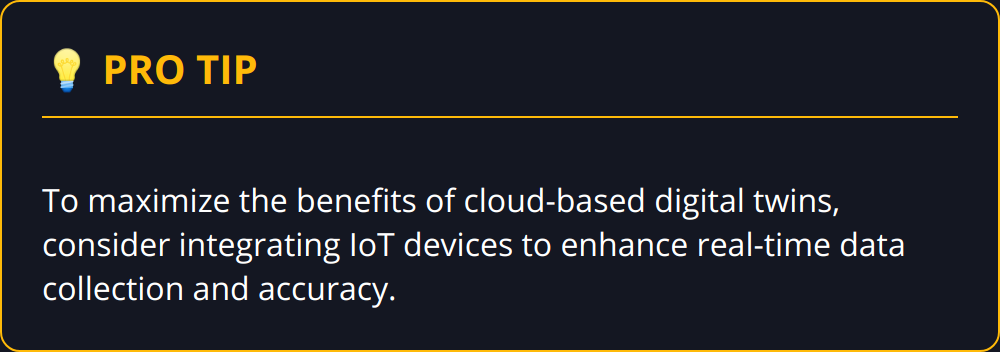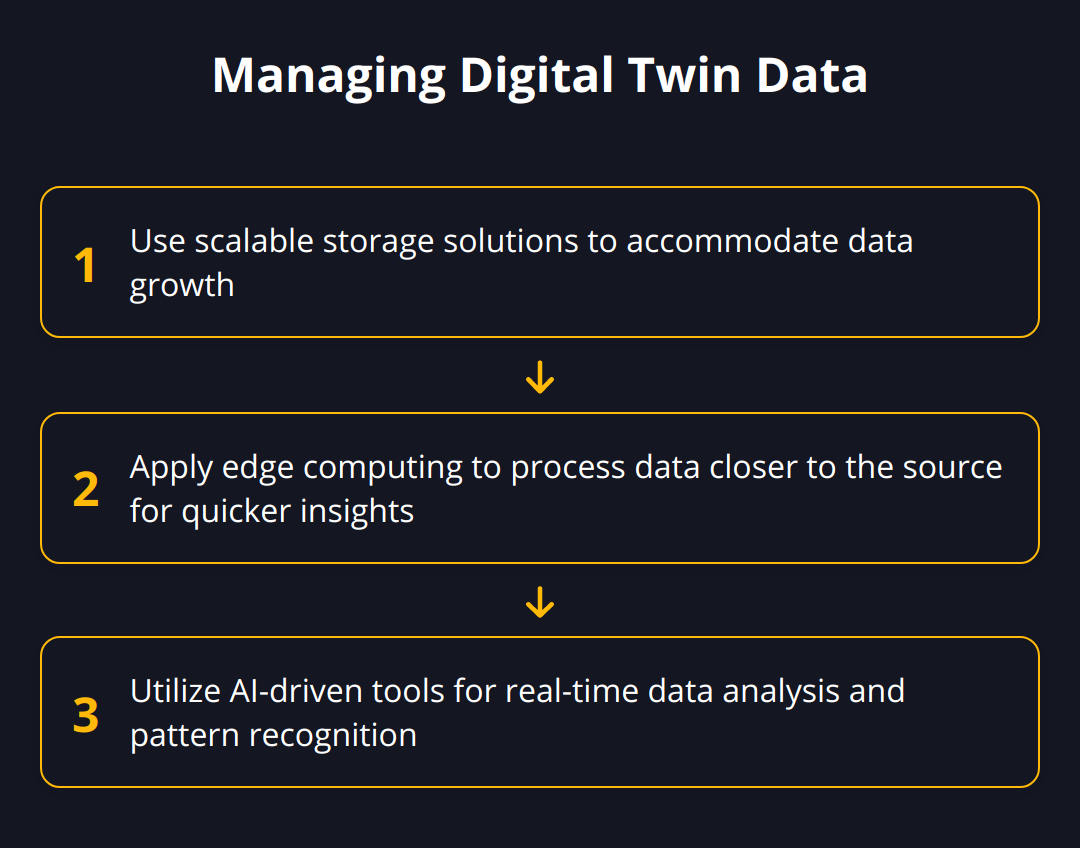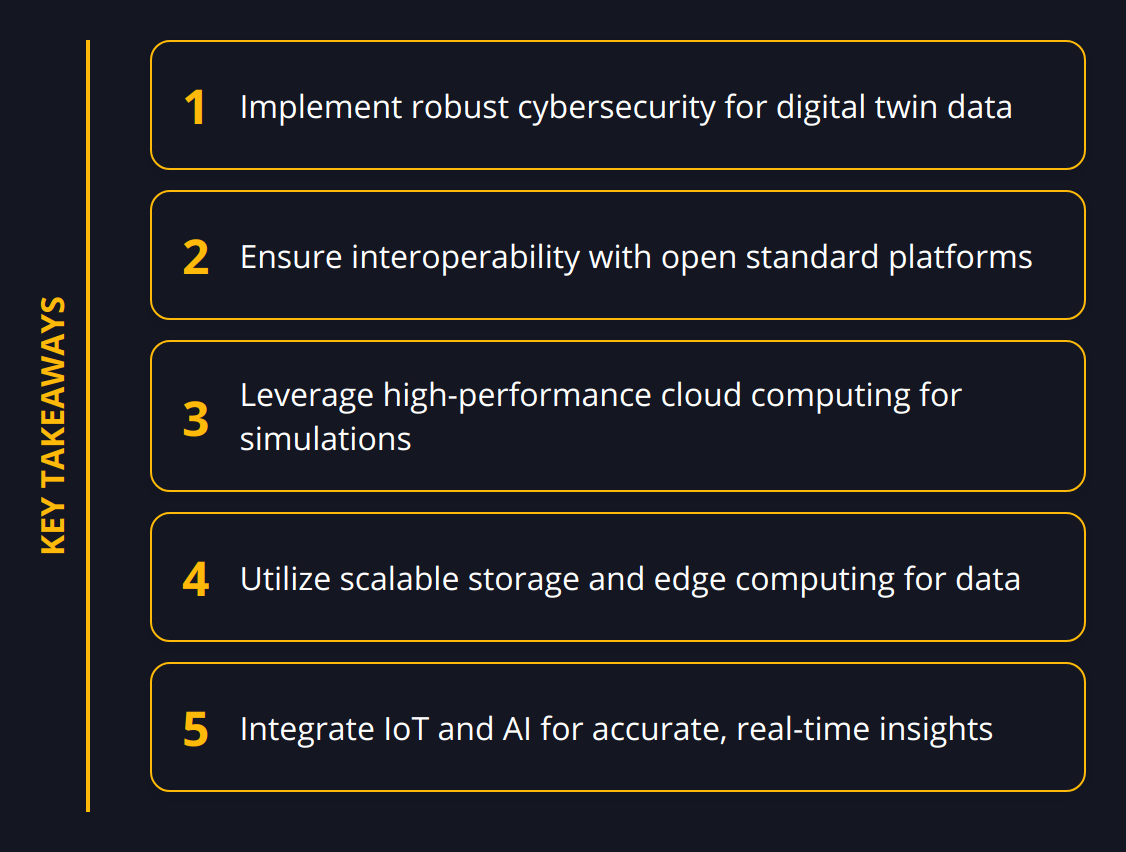We at Newroom Connect believe that the interplay between cloud computing and digital twins is set to transform industries, making operations more efficient and innovation more attainable. As technology rapidly evolves, cloud-based digital twins stand out as a pivotal technological trend with the potential to optimize performance across various sectors.
Understanding the benefits, alongside the inherent challenges, is fundamental for anyone seeking to leverage this cutting-edge approach. This blog post aims to shed light on the nuances of cloud-based digital twin technology, its impact, and the factors to be considered for successful implementation.
Why Choose Cloud-Based Digital Twins?
The shift towards cloud-based digital twins is not just a passing trend; it’s a strategic move that can define the future of operational excellence and innovation. This technology offers the elasticity to grow and adapt quickly, alongside remarkable cost efficiency and the power of real-time data analysis.

For businesses scaling operations, cloud-based digital twins provide incredibly agile opportunities. They allow for an easy increase or decrease in digital twin instances or related resources without the heavy initial investment traditionally associated with physical infrastructure. This means businesses can test new ideas and roll out changes with minimal risk and investment. The scalability and flexibility of cloud-based digital twins are particularly important for sectors like manufacturing, where production demands can fluctuate dramatically.
When it comes to reducing costs, cloud-based digital twins are a game-changer. By virtualizing the monitoring and testing of assets, enterprises can slash the expenses associated with downtime, maintenance, and even R&D. Moreover, the operational efficiency gains from cloud-based digital twins extend across product life cycles, supply chain management, and predictive maintenance.
Real-time data analysis and accessibility are essential in a world where insights and action can’t wait. Cloud-based digital twins unlock the potential to monitor systems and analyze data as it’s generated. This immediacy not only accelerates decision-making processes but can also be pivotal in preventing costly breakdowns or optimizing system performance. Accessibility, on the other hand, connects teams across geographic locations. They can interact with the digital twin from anywhere, making collaboration more immediate and effective.

Consider these practical points for increased effectiveness:
-
Evaluate your data infrastructure: To fully harness the power of cloud-based digital twins, ensure your data infrastructure can effectively capture, transmit, and store large volumes of data.
-
Capitalize on IoT: Integrate Internet of Things devices for real-time data collection to keep your digital twins accurate and actionable.
-
Leverage AI and analytics: Apply artificial intelligence and big data analytics to process and interpret the vast amount of data generated by your digital twins for predictive insights.
-
Ensure cyber-security: Given the cloud-based nature, prioritize robust cybersecurity measures to protect your digital twin data and operations.
Remember, cloud-based digital twins are at the forefront of innovative technology. By adopting this approach, companies position themselves not just to navigate the future but to actively shape it.
How Does Cloud Enhance Digital Twins?
The integration of cloud technology with digital twins marks a significant shift in digital transformation strategies. The cloud’s vast computational power and storage capabilities bring out the full potential of digital twins, fostering enhanced cross-geographic collaboration among teams, evolving standards for seamless interoperability, and enabling more complex and detailed simulations than ever before.
Boosting Team Productivity Through Enhanced Collaboration
Working with digital twins on the cloud empowers teams to collaborate in unprecedented ways. Gone are the days of siloed data and limited access. Today, a designer in Berlin and an engineer in Tokyo can simultaneously analyze and interact with the same model in real time. Teams can tweak designs, run scenarios, and share outcomes instantly, which streamlines the development process and reduces time-to-market.
Actionable steps include integrating collaboration tools that complement your digital twin environment and setting clear protocols for version control and data sharing. Training team members to utilize these tools effectively is key. In doing so, operational barriers diminish and productivity soars.

Interoperability: The Backbone of Modern Systems Integration
As the use of digital twins becomes more widespread, the need for interoperability standards grows. We’ve witnessed a push for industry-wide standards that enable various digital twins to ‘speak the same language.’ When different systems can communicate and understand each other’s data, the scope of digital twins expands, integrating complex ecosystems easily.
For practical implementation, focus on selecting digital twin platforms that promote open standards and have strong track records of successful integration. Refer to our previous discussion on Digital Twin Implementation to understand how integration plays a critical role in leveraging their full potential.

Enabling Complex Simulations for In-depth Analysis
The cloud’s computing prowess takes simulations to new heights. By offloading computation-intensive tasks to the cloud, digital twins can run more elaborate and sophisticated models. This capability is particularly beneficial for industries like aerospace and automotive, where simulations can save millions in physical prototyping and testing.
To tap into this benefit, assess your computational needs and partner with a cloud service that offers the right balance of computational power and scalability. This ensures your simulations not only reflect current needs but are also future-proofed against evolving demands.
Let’s consider these focal points for incorporating cloud technology in your digital twin strategy:
-
Opt for cloud services with high-performance computing capabilities.
-
Utilize data centers located strategically to shorten data transfer times and speed up simulations.
-
Partner with providers that keep pushing the envelope in cloud innovation.
In summary, the cloud is not just transforming digital twins; it’s redefining how we approach innovation, collaboration, and simulation in the digital age. By embracing this technology, businesses can forge ahead, creating more immersive, detailed, and interconnected digital twin experiences that were once thought impossible.
Navigating Digital Twin Complexities
When adopting cloud-based digital twins, businesses must navigate a series of complexities to fully realize their potential. These challenges range from protecting sensitive data to integrating advanced technologies and handling massive data streams. Addressing these challenges head-on is imperative to ensure smooth operations and secure, valuable insights.
Securing Your Data is Non-Negotiable
Data privacy and security are foundational when implementing cloud-based digital twins. Given that these systems often deal with proprietary and sensitive data, a security breach could be disastrous. Strong encryption, regular security audits, and strict access controls are paramount. It’s equally important to choose cloud service providers with a strong security track record. For instance, Azure Digital Twins prioritizes security within its platform.
Here are some key measures:
-
Encrypt data both in transit and at rest
-
Conduct regular vulnerability assessments and penetration testing
-
Implement multi-factor authentication for system access
Solving the Integration Puzzle
Another major hurdle is the technical complexity of integrating digital twins with existing systems. It’s not just about deploying technology, but seamlessly fusing it with current processes and tools to amplify benefits. Picking the right platforms that ensure smooth data flow between operational technology and information technology is essential. Moreover, selecting adaptable systems that can grow with evolving industry standards is a sage move. Our insights on Digital Twin Implementation emphasize the importance of a strategic integration approach.
Practical points to consider:
-
Prioritize systems with open APIs and robust integration support
-
Opt for solutions with easy-to-use interfaces and clear documentation
-
Collaborate with vendors experienced in system integration
The Data Deluge Dilemma
Digital twins generate substantial data, and the management of this continuous flow is a challenge in its own right. Organizations must establish robust data management practices to ensure system performance and accurate insights. Efficient data storage, processing capabilities, and the ability to make real-time adjustments based on analytics are crucial. Managing the influx of IoT device data, recognizing patterns, and making prompt decisions are all facilitated by a well-structured data management strategy.

In essence, the path to successful cloud-based digital twin adoption is rife with challenges, but each can be overcome with the right mindset, tools, and strategies. Focusing on these details paves the way for a transformative journey into the world of advanced digital replication.
Final Thoughts
Cloud-based digital twins are undeniably game-changing. They bring a new level of agility to operations, fuel innovation, and provide substantial cost savings through more intelligent resource management. The ability to simulate and optimize in a virtual environment before making any physical changes delivers unprecedented competitive advantages. Businesses that harness this technology can gain real-time insights, predict future outcomes, and make data-driven decisions faster than ever.

While the benefits paint a bright future, it’s essential to acknowledge the barriers. Data security and system integration present significant challenges that organizations must navigate to protect their sensitive information and maintain seamless operations. These hurdles, however, are not insurmountable. With the right approach and expertise, businesses can effectively manage the complexities and embrace the full potential of cloud-based digital twins.
Activating the future of industry, Newroom Connect provides a platform where cloud-based digital twins come to life. Our solutions offer dynamic spaces for your business, such as virtual trade fairs and e-learning platforms, underscoring the practical applications of this technology.
Looking ahead, continual innovation and adoption in the field are non-negotiable. As the technology evolves, staying abreast of cloud developments and integrating new digital twin capabilities will be paramount. Here are essential points for the path ahead:
-
Embrace advancements in cloud computing to enhance digital twin complexity and utility
-
Prioritize ongoing cybersecurity measures to safeguard your digital infrastructure
-
Pursue comprehensive training for your teams to maximize the collaborative aspects of digital twins
-
Engage with platforms like Newroom Connect to build and expand your virtual environments
As trailblazers in the digital age, our commitment at Newroom Connect is to facilitate this evolution, partnering with organizations like yours to navigate the digital twin landscape effectively. The fusion of cloud computing and digital twinning is not merely a trend—it’s the bedrock for a smarter and more efficient future. We’re excited to help your business explore and thrive in this new realm where virtual and physical realities converge.


